Hey, have you ever felt tired of dealing with frizzy, curly, or messy hair every single day? Maybe you’ve tried straightening it at home, but it just goes back to being wild after a while. If you’ve been wishing for smooth, straight hair that actually lasts, hair rebonding might be something to look into.
So, what is hair rebonding? In simple words, it’s a salon treatment that changes the way your hair behaves. It makes your hair super straight, shiny, and much easier to manage. But before you jump into it, it’s good to know how it works, what it does to your hair, and whether it’s right for you.
In this blog, we’ll explain everything, like how hair rebonding works, what results to expect, how it’s different from keratin and smoothening, what side effects you should know about, and even how it works for men, too.
Let’s get into it.
What is Hair Rebonding?
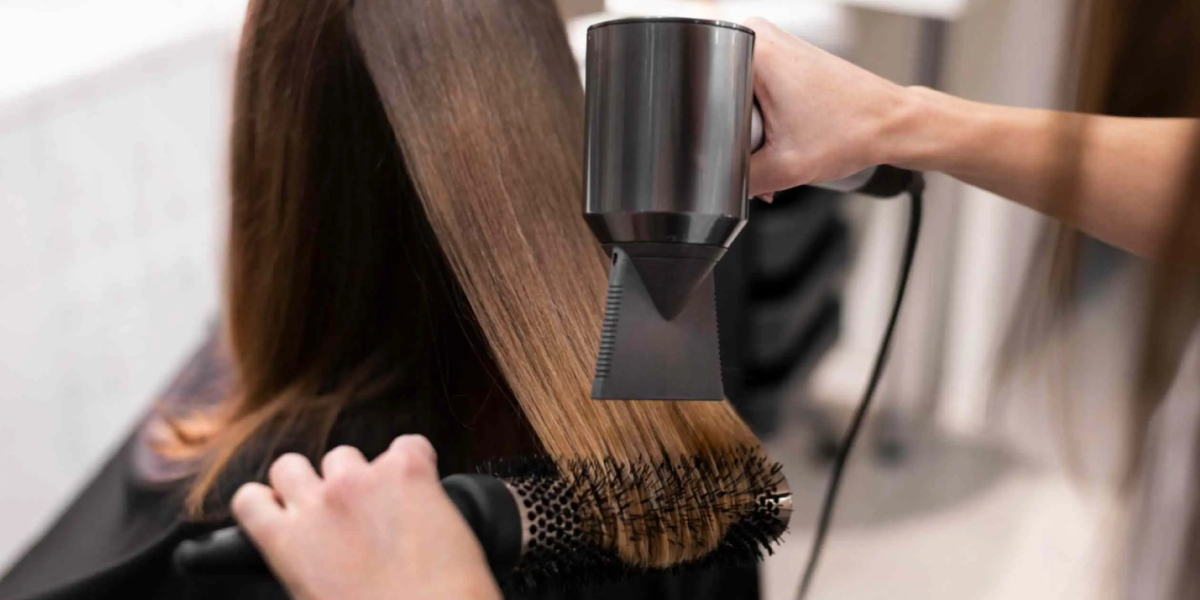
Hair rebonding is a chemical treatment that changes the natural texture of your hair. It makes your hair super straight, smooth, and silky.
Basically, it breaks the natural bonds in your hair and rebuilds them differently so your hair becomes straight instead of curly or wavy. This whole process is based on the chemistry of hair straightening, where the hair’s inner structure is changed using heat and chemicals.
It’s also called chemical straightening and is done by a professional stylist at a salon.
And yes, there’s hair rebonding for men too! Many men with curly or frizzy hair get this treatment for a sleek and manageable look.
How Does Hair Rebonding Work?
Let’s break it down step by step:
- Hair Wash – First, your stylist washes your hair with a mild shampoo.
- Drying – Your hair is blow-dried or air-dried.
- Sectioning – Hair is divided into small parts.
- Relaxant Applied – A special cream breaks the hair’s natural bonds.
- Waiting Time – The relaxant stays on for about 30 minutes or more.
- Steaming – Your hair is steamed for better absorption.
- Rinse and Dry – The cream is rinsed off, and your hair is dried.
- Keratin Lotion Applied – This rebuilds the hair structure.
- Neutralizer Applied – It locks the new straight shape.
- Final Wash and Flat Ironing – Hair is washed again, dried, and straightened.
Result: Super straight, shiny, and soft hair!
Chemicals Used in Hair Rebonding
This treatment uses strong chemicals like formaldehyde or methylene glycol. These are part of the chemistry of hair straightening — they break and rebuild hair bonds.
Some products say “formaldehyde-free” but may still release harmful gases. So always ask your stylist about the products they’re using.
How will Your Hair Look After Hair Rebonding?
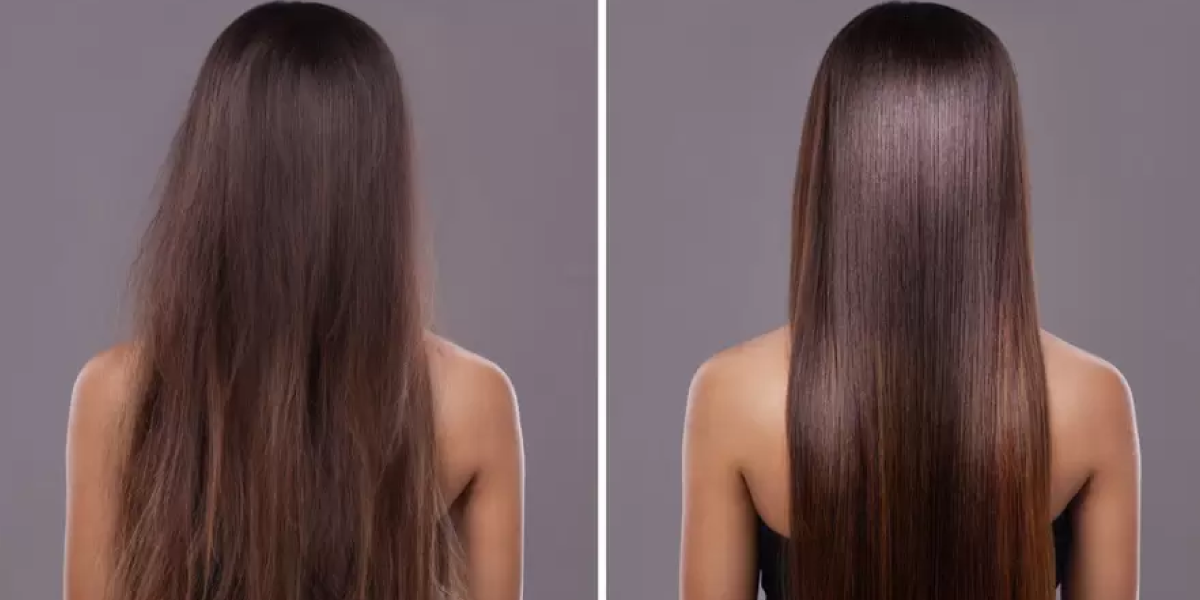
After hair rebonding, your hair will look super straight, shiny, smooth, and completely frizz-free — even straighter than naturally straight hair. But if your hair is already damaged, colored, bleached, or very thin, the treatment might make things worse instead of better.
That’s because the strong chemicals can weaken your hair even more. That’s why a good stylist will always test a small section of your hair first to make sure it’s safe for you.
Side Effects of Hair Rebonding
Like all strong chemical treatments, hair rebonding has some risks:
- Hair breakage
- Dryness
- Hair fall
- Scalp irritation
A 2019 study even found that regular use of chemical straightening (including hair rebonding) might raise the risk of breast cancer due to hormone-disrupting chemicals.
Avoid rebonding during pregnancy, as the chemicals may harm your baby.
Already have damaged hair? Before choosing any treatment, learn how to repair damaged hair the right way.
Hair Rebonding Vs Hair Smoothening
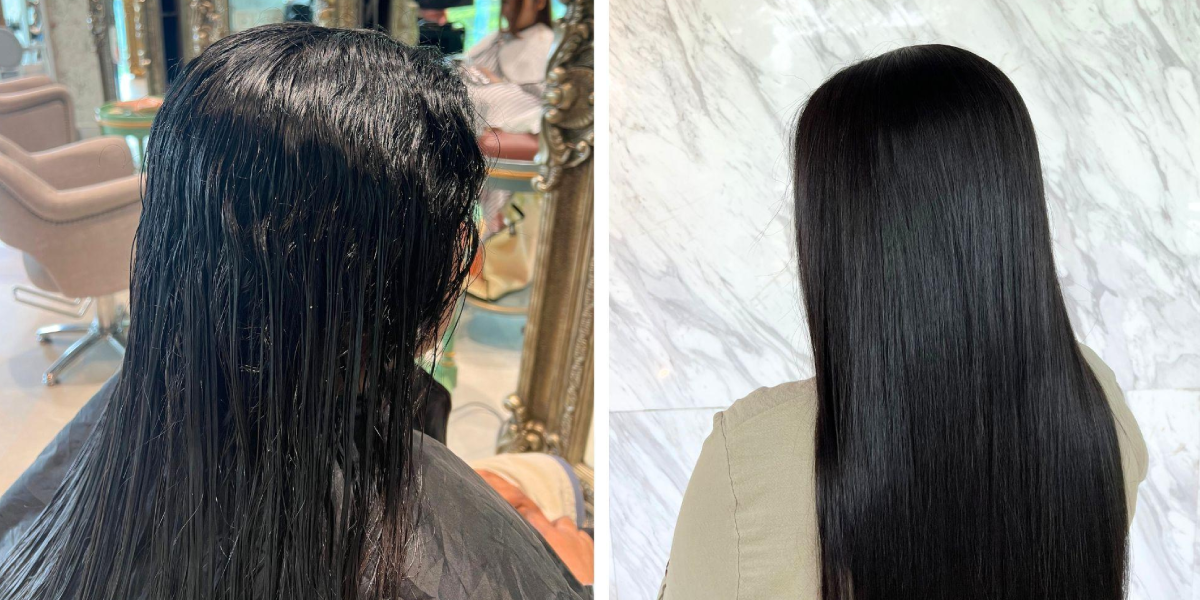
Let’s compare Hair Rebonding Vs Hair Smoothening (also known as keratin or Brazilian treatments):
| Feature | Hair Rebonding | Hair Smoothing (Keratin/Brazilian) |
| Result | Very straight hair | Soft, less frizzy hair |
| Chemical Strength | Stronger | Milder |
| Hair Bond Change | Bonds are broken and rebuilt | Only the cuticle is smoothed |
| Damage Risk | Higher | Lower |
This is also often called Hair rebonding vs keratin treatment. Rebonding gives more permanent and straighter results, while keratin treatments are gentler and give more natural-looking smoothness.
Hair Care Tips After Rebonding
To make your rebonded hair last longer and stay healthy, follow these tips:
First 3 Days
- Don’t wash your hair for 72 hours
- Don’t tie or clip your hair
- Sleep with your hair straight and open
Ongoing Care
- Use shampoo and conditioner for straight/treated hair
- Apply hair serum after every wash
- Avoid heat styling or use a cool setting
- Use a shower cap while bathing
- Oil your hair regularly
- Wash your hair 3–4 times a week only
- Eat healthy food for strong hair
- Trim split ends every 6–8 weeks.
To keep your hair strong and healthy after rebonding, try using the best shampoo and conditioner for hair growth.
How Long Does Hair Rebonding Last?
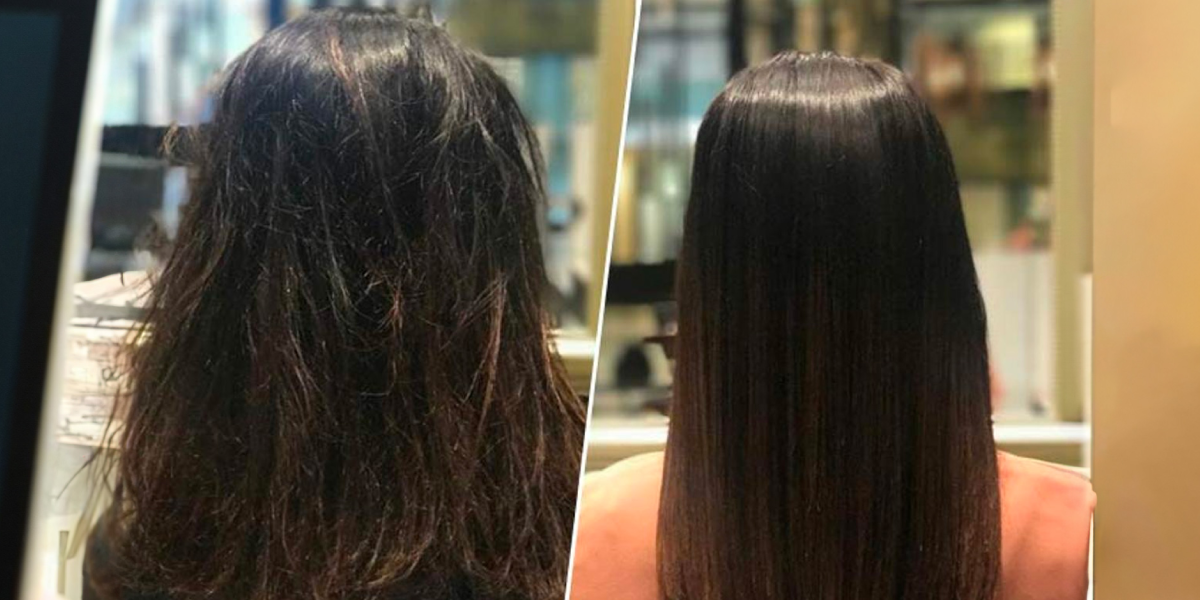
Hair rebonding lasts about 6 to 7 months. As your natural hair grows, the roots will show your original texture. You might need touch-ups every 3–6 months, depending on how fast your hair grows.
Also, if you decide not to rebond and want to keep your natural curls healthy, check out the best shampoo and conditioner for curly hair.
Is Hair Rebonding Good for All Hair Types?
Hair rebonding is not the best choice for everyone. If your hair is very thin, weak, colored, bleached, or already damaged, or if your scalp is too sensitive, this treatment might do more harm than good. It’s always smart to talk to a professional stylist first. They can check your hair and let you know if hair rebonding is safe for you or suggest a better and safer option.
If your hair is thin or weak, it’s better to avoid rebonding and instead use the best shampoo and conditioner for thinning hair.
Other Ways to Straighten Hair Without Chemicals
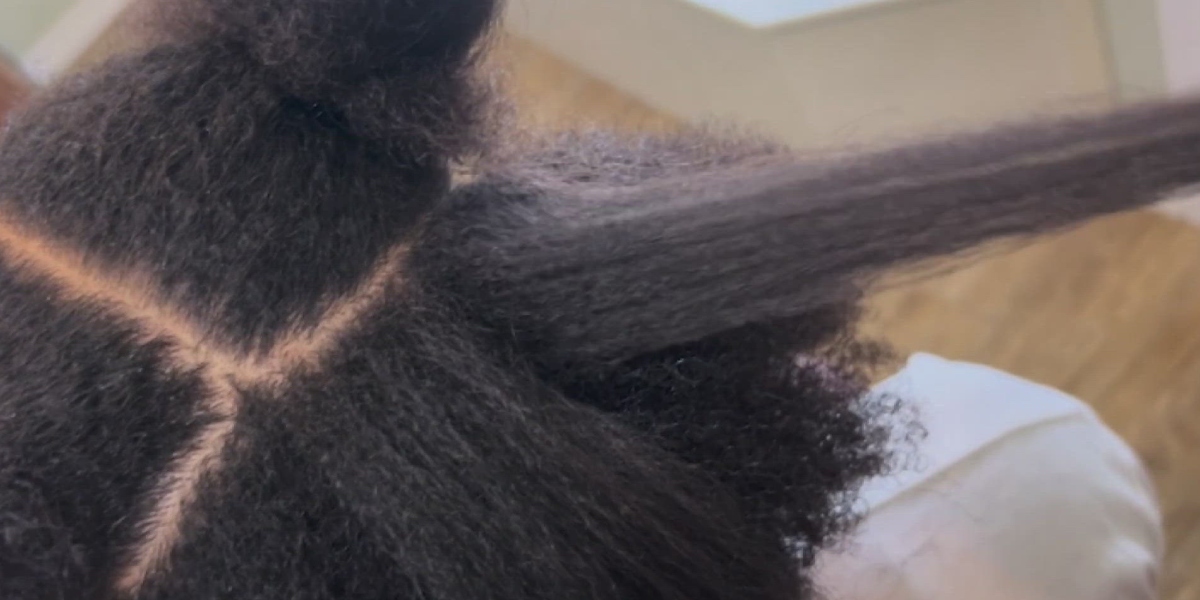
If you want straighter hair but don’t want damage, try:
- Flat ironing
- Blow-drying at a salon
- Hair rollers
- Hair wrapping
- Deep conditioning or hot oil treatments
These are temporary methods, but they’re safer for your hair.
Wrapping Up
Hair rebonding can give you that sleek, straight hair you’ve always wanted, but it comes with strong chemicals and heat. If done carelessly, it may damage your hair or affect your health.
So before you go for it:
- Know your hair type
- Talk to a professional
- Understand the pros and cons
If done by an expert and cared for properly, hair rebonding treatment can give you long-lasting, beautiful hair.
FAQs
|

